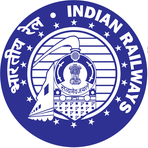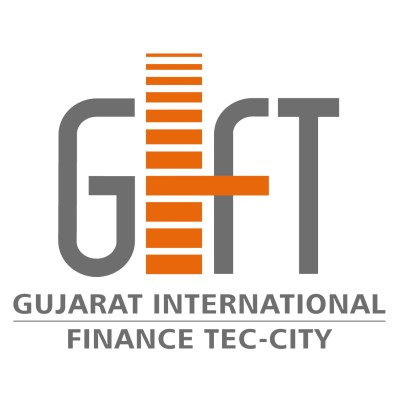The Future of Manufacturing and Infrastructure: A Strategic Shift in India
August 15, 2024, 6:03 am
India stands at a crossroads. The manufacturing sector is poised for transformation, driven by innovative models and strategic initiatives. The call for GIFT City-like zones echoes through the corridors of industry leaders. These zones are not just geographical locations; they are beacons of hope for a manufacturing renaissance.
Sanjeev Krishan, the chief of PwC, has painted a vivid picture of what these zones could mean for India. They represent a fertile ground for growth, innovation, and investment. The GIFT (Gujarat International Finance Tec-City) model serves as a template. It has successfully created an ecosystem that nurtures business and fosters technological advancement. Replicating this model across the country could be the key to unlocking the full potential of India's manufacturing capabilities.
But what exactly are GIFT City-like zones? They are specialized areas designed to enhance industrial infrastructure. Think of them as greenhouses for businesses, where the right conditions can lead to flourishing growth. By establishing these zones, India can create a structured environment that encourages efficiency and innovation. The result? A manufacturing sector that not only competes but thrives on the global stage.
Central to this vision are Intellectual Property (IP)-linked schemes. These initiatives aim to attract investments by providing a supportive environment for technology and innovation. Imagine a garden where ideas can blossom, nurtured by the right policies and incentives. This is the essence of IP-linked schemes. They offer a safety net for innovators, allowing them to focus on what they do best—creating and developing new technologies.
The economic impact of these initiatives cannot be overstated. By fostering specialized zones with tailored incentives, India can improve business conditions. This, in turn, opens the floodgates for investment opportunities. The manufacturing sector can become a powerhouse, driving economic growth and creating jobs. The strategic importance of this approach aligns with broader efforts to strengthen industrial infrastructure. It’s a commitment to sustainable economic development that can yield dividends for years to come.
In the realm of transportation, BEML (Bharat Earth Movers Limited) is making waves. The company plans to export Vande Bharat metro trains, a move that signals its ambition to tap into international markets. These trains are not just vehicles; they are symbols of modernity and efficiency. Designed with advanced technology, they promise high-speed, comfortable travel for urban commuters. BEML's export initiative is a bold step, expanding its footprint in the global transportation sector. It’s a testament to India’s growing prowess in manufacturing high-quality products.
Meanwhile, Chennai is gearing up for a significant upgrade in its metro infrastructure. A new depot for driverless trains is on the horizon. This initiative is not merely about building a structure; it’s about embracing the future of urban transportation. The depot at Nookampalayam will be dedicated to the maintenance and operation of driverless trains. This marks a pivotal moment in Chennai's metro evolution. Driverless technology promises to enhance operational efficiency, reducing human error and improving safety.
As the city modernizes its metro system, it sets a precedent for other urban areas. The integration of driverless technology could revolutionize public transport, making it more reliable and efficient. This is not just about convenience; it’s about creating a sustainable urban environment. The ripple effects of such advancements can lead to reduced traffic congestion and lower carbon emissions.
On another front, the cement industry is experiencing a mixed bag of fortunes. Major companies report growth in sales volumes, indicating a surge in construction and infrastructure activities. However, the revenue story is less rosy. Lower cement prices have muted overall earnings, squeezing profit margins. The industry faces a challenging pricing environment, which tempers the optimism surrounding volume growth.
This scenario underscores the complexities of the market dynamics at play. While increased construction activity is a positive sign, the pricing pressures highlight the need for strategic planning. Companies must navigate these waters carefully to maintain profitability while meeting the rising demand for cement.
In conclusion, India is on the brink of a manufacturing and infrastructure revolution. The establishment of GIFT City-like zones and the embrace of innovative technologies are pivotal to this transformation. BEML's export ambitions and Chennai's driverless metro initiative are steps in the right direction. However, challenges remain, particularly in the cement sector, where pricing pressures could hinder growth.
The future is bright, but it requires careful navigation. With the right strategies in place, India can harness its potential, driving economic growth and positioning itself as a global manufacturing hub. The journey has begun, and the destination is a thriving, innovative, and sustainable industrial landscape.
Sanjeev Krishan, the chief of PwC, has painted a vivid picture of what these zones could mean for India. They represent a fertile ground for growth, innovation, and investment. The GIFT (Gujarat International Finance Tec-City) model serves as a template. It has successfully created an ecosystem that nurtures business and fosters technological advancement. Replicating this model across the country could be the key to unlocking the full potential of India's manufacturing capabilities.
But what exactly are GIFT City-like zones? They are specialized areas designed to enhance industrial infrastructure. Think of them as greenhouses for businesses, where the right conditions can lead to flourishing growth. By establishing these zones, India can create a structured environment that encourages efficiency and innovation. The result? A manufacturing sector that not only competes but thrives on the global stage.
Central to this vision are Intellectual Property (IP)-linked schemes. These initiatives aim to attract investments by providing a supportive environment for technology and innovation. Imagine a garden where ideas can blossom, nurtured by the right policies and incentives. This is the essence of IP-linked schemes. They offer a safety net for innovators, allowing them to focus on what they do best—creating and developing new technologies.
The economic impact of these initiatives cannot be overstated. By fostering specialized zones with tailored incentives, India can improve business conditions. This, in turn, opens the floodgates for investment opportunities. The manufacturing sector can become a powerhouse, driving economic growth and creating jobs. The strategic importance of this approach aligns with broader efforts to strengthen industrial infrastructure. It’s a commitment to sustainable economic development that can yield dividends for years to come.
In the realm of transportation, BEML (Bharat Earth Movers Limited) is making waves. The company plans to export Vande Bharat metro trains, a move that signals its ambition to tap into international markets. These trains are not just vehicles; they are symbols of modernity and efficiency. Designed with advanced technology, they promise high-speed, comfortable travel for urban commuters. BEML's export initiative is a bold step, expanding its footprint in the global transportation sector. It’s a testament to India’s growing prowess in manufacturing high-quality products.
Meanwhile, Chennai is gearing up for a significant upgrade in its metro infrastructure. A new depot for driverless trains is on the horizon. This initiative is not merely about building a structure; it’s about embracing the future of urban transportation. The depot at Nookampalayam will be dedicated to the maintenance and operation of driverless trains. This marks a pivotal moment in Chennai's metro evolution. Driverless technology promises to enhance operational efficiency, reducing human error and improving safety.
As the city modernizes its metro system, it sets a precedent for other urban areas. The integration of driverless technology could revolutionize public transport, making it more reliable and efficient. This is not just about convenience; it’s about creating a sustainable urban environment. The ripple effects of such advancements can lead to reduced traffic congestion and lower carbon emissions.
On another front, the cement industry is experiencing a mixed bag of fortunes. Major companies report growth in sales volumes, indicating a surge in construction and infrastructure activities. However, the revenue story is less rosy. Lower cement prices have muted overall earnings, squeezing profit margins. The industry faces a challenging pricing environment, which tempers the optimism surrounding volume growth.
This scenario underscores the complexities of the market dynamics at play. While increased construction activity is a positive sign, the pricing pressures highlight the need for strategic planning. Companies must navigate these waters carefully to maintain profitability while meeting the rising demand for cement.
In conclusion, India is on the brink of a manufacturing and infrastructure revolution. The establishment of GIFT City-like zones and the embrace of innovative technologies are pivotal to this transformation. BEML's export ambitions and Chennai's driverless metro initiative are steps in the right direction. However, challenges remain, particularly in the cement sector, where pricing pressures could hinder growth.
The future is bright, but it requires careful navigation. With the right strategies in place, India can harness its potential, driving economic growth and positioning itself as a global manufacturing hub. The journey has begun, and the destination is a thriving, innovative, and sustainable industrial landscape.

